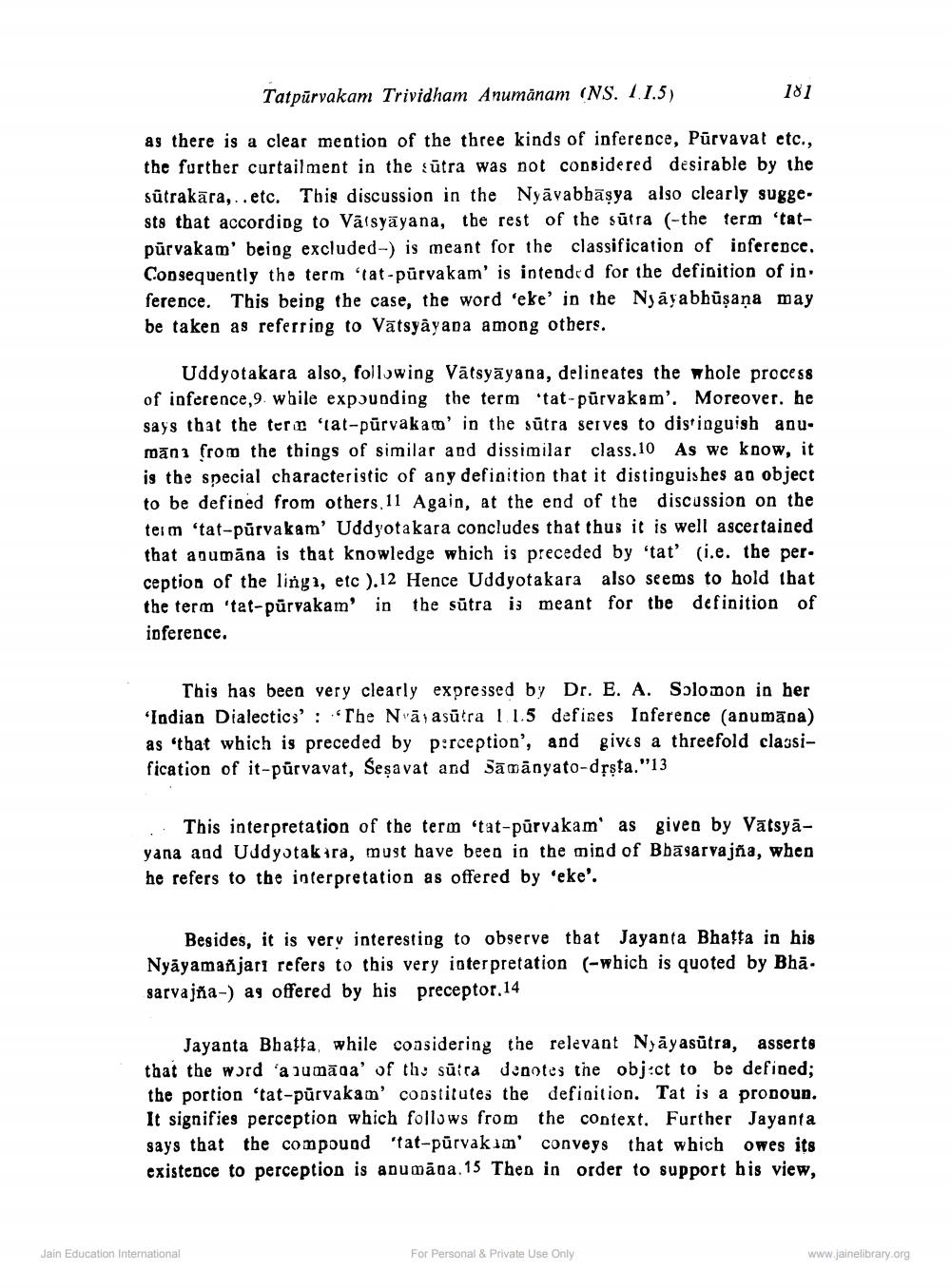________________
Tatparvakam Trividham Anumanam (NS. 1.1.5)
181
as there is a clear mention of the three kinds of inference, Purvavat etc., the further curtailment in the sutra was not considered desirable by the sūtrakara,..etc. This discussion in the Nyavabbäṣya also clearly sugge sts that according to Värsyayana, the rest of the sutra (-the term 'tatpürvakam' being excluded-) is meant for the classification of inference. Consequently the term 'tat-pürvakam' is intended for the definition of in. ference. This being the case, the word 'eke' in the Nyayabhüṣaṇa may be taken as referring to Vatsyayana among others.
Uddyotakara also, following Vätsyäyana, delineates the whole process. of inference, while expounding the term 'tat-purvakem'. Moreover, he says that the term 'tat-pūrvakam' in the sutra serves to distinguish anuman from the things of similar and dissimilar class. 10 As we know, it is the special characteristic of any definition that it distinguishes an object to be defined from others. 11 Again, at the end of the discussion on the term 'tat-pürvakam' Uddyotakara concludes that thus it is well ascertained that anumana is that knowledge which is preceded by 'tat' (i.e. the perception of the linga, etc ).12 Hence Uddyotakara also seems to hold that the term 'tat-purvakam' in the sutra is meant for the definition of inference.
This has been very clearly expressed by Dr. E. A. Solomon in her 'Indian Dialectics': The Naasutra 1.1.5 defines Inference (anumana) as that which is preceded by perception', and gives a threefold classification of it-purvavat, Seṣavat and Samanyato-drsta."13
This interpretation of the term 'tat-pūrvakam' as given by Vatsyayana and Uddyotakira, must have been in the mind of Bbasarvajña, when he refers to the interpretation as offered by 'eke'.
Besides, it is very interesting to observe that Jayanta Bhatta in his Nyayamañjart refers to this very interpretation (-which is quoted by Bhasarvajña-) as offered by his preceptor.14
Jayanta Bhatta, while considering the relevant Nyayasutra, asserts that the word 'aumana' of the sutra denotes the object to be defined; the portion 'tat-pūrvakam' constitutes the definition. Tat is a pronoun. It signifies perception which follows from the context. Further Jayanta says that the compound tat-purvakim' conveys that which. existence to perception is anumana.15 Then in order to support his view,
Jain Education International
For Personal & Private Use Only
www.jainelibrary.org




